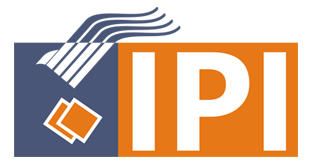Potret Aktivitas Belajar Mahasiswa Vokasi Kesehatan di Masa Pandemi Covid-19
(1) Poltekkes Kemenkes Jakarta II
(*) Corresponding Author
Abstract
Keywords
Full Text:
PDF (Indonesian)References
BBC Indonesia, Covid-19: Setahun Sejak Karantina Wilayah di Wuhan, Bagaimana China Mengatasi Pandemi?, BBC News Indones., p. 1, 2021, [Online]. Available: https://www.bbc.com/indonesia/dunia-55734119.
Portal Informasi Indonesia, Kasus Covid-19 Pertama, Masyarakat Jangan Panik, Indonesia.go.id, vol. 2019, pp. 2025, 2020, [Online]. Available: https://indonesia.go.id/narasi/indonesia-dalam-angka/ekonomi/kasus-covid-19-pertama-masyarakat-jangan-panik.
S.T.P. COVID-19, Gugus Tugas Percepatan Penanganan COVID-19, Gugus Tugas Percepatan Penanganan COVID-19. pp. 59, 2020, [Online]. Available: https://covid19.go.id/peta%02sebaran.
Rokom, Diam di Rumah Hindari Risiko Tertular Covid-19, Kementeri. Kesehat. Republik Indones., 2021, [Online]. Available: https://sehatnegeriku.kemkes.go.id/baca/umum/20200506/3733835/diam-rumah-hindari-risiko-tertular-covid-19/.
Kemendikbud, Pencegahan Penyebaran Virus Covid-19 dengan Kerja di Rumah bagi ASN, Menpan.go.id, 2020.
N. B. Argaheni, Sistematik Review: Dampak Perkuliahan Daring Saat Pandemi COVID-19 terhadap Mahasiswa Indonesia, PLACENTUM J. Ilm. Kesehat. dan Apl., vol. 8, no. 2, p. 99, 2020, doi: 10.20961/placentum.v8i2.43008.
A. Pratama, N. Cahyaningrum, A. Wulandari, dan S. Z. Anggraini, Pengaruh Perkuliahan Daring Terhadap Efektivitas Pembelajaran Mahasiswa Program Studi Administrasi Publik Universitas Pembangunan Nasional Veteran Jawa Timur di Era Pandemi COVID 19, J. Indones. Sos. Teknol., vol. 2, no. 5, pp. 717730, 2021, doi: 10.36418/jist.v2i5.146.
R. M. Napitupulu, Dampak Pandemi Covid-19 terhadap Kepuasan Pembelajaran Jarak Jauh, J. Inov. Teknol. Pendidik., vol. 7, no. 1, pp. 2333, 2020, doi: 10.21831/jitp.v7i1.32771.
U. Padjajaran, Kejar Kompetensi Peserta Didik Selama Pandemi, Pendidikan Butuhkan Inovasi, 2020.
Statita.com, Smartphone Penetration Rate in Indonesia from 2017 to 2020 with forecasts until 2026, 2022. [Online]. Available: https://www.statista.com/statistics/321485/smartphone-user-penetration-in-indonesia/.
Hootsuite, Hootsuite (We are Social): Indonesian Digital Report 2021, 2021. [Online]. Available: https://andi.link/hootsuite-we-are-social-indonesian-digital-report-2021/.
F. C. Rosana, Penyebab Internet RI Lemot, Dari Geografi Hingga Infrastruktur, Tempo.co, 2020. .
K. Machmud, The Smartphone Use in Indonesian Schools: The High School Students Perspectives, J. Arts Humanit., vol. 7, no. 3, p. 33, 2018, doi: 10.18533/journal.v7i3.1354.
Brandriddle.com, WhatsApp History and Success Story: Second most popular Social Media Site from Rejected Ones, brandirddle.com, 2022. https://brandriddle.com/whatsapp-successstory-history/%0AFailure.
H. Mulyono, G. Suryoputro, dan S. R. Jamil, The application of WhatsApp to Support Online Learning During the COVID-19 Pandemic in Indonesia, Heliyon, vol. 7, no. 8. 2021, doi: 10.1016/j.heliyon.2021.e07853.
F. Rennie, Rennie , F ( 2014 ) Using Social Media in Higher Education. EdTech notes Published by the Commonwealth Educational Media Centre for Asia (CEMCA), The Commonwealth of Learning (CoL) ht ... A topical start-up guide series on emerging topics on Educatio, no. January 2014, 2017.
D. N. Baety and D. R. Munandar, Analisis Efektifitas Pembelajaran Daring dalam Menghadapi Wabah Pandemi Covid-19, Edukatif J. Ilmu Pendidik., vol. 3, no. 3, pp. 880989, 2021, [Online]. Available: https://edukatif.org/index.php/edukatif/article/view/476.
I. Ketut Sudarsana, I. Bagus Made Anggara Putra, I. Nyoman Temon Astawa, and I. Wayan Lali Yogantara, The Use of Google Classroom in the Learning Process, J. Phys. Conf. Ser., vol. 1175, no. 1, 2019, doi: 10.1088/1742-6596/1175/1/012165.
Michael Zhang, Teaching with Google. Birmingham Mumbai: Packt Publishing, 2016.
Deiniatur, Deiniatur, The Use of E-Learning through Google | 114, Use E-Learning through Google Classr. to Improv. Students Articul. Phonetic Abil., vol. 4, no. 2, pp. 114121, 2019.
A. A. Jaffar, YouTube: An Emerging Tool in Anatomy Education, Anat. Sci. Educ., vol. 5, no. 3, pp. 158164, 2012, doi: 10.1002/ase.1268.
N. Fadhil Abbas and T. Ali Qassim, Investigating the Effectiveness of YouTube as a Learning Tool among EFL Students at Baghdad University, Arab World English J., vol. 6, no. 6, pp. 344356, 2020, doi: 10.24093/awej/call6.23.
Guzacheva, Zoom Technology as an Effective Tool for Distance Learning, Bull. Sci. Pract., vol. 6, no. 5, pp. 457460, 2020.
G. Far-Far, Efektifitas Penggunaan Aplikasi Zoom Meeting dalam Pembelajaran, Istor. J. Pendidik. dan Sej., vol. 17, no. 1, pp. 15, 2021.
N. Nurbaiti, Suksekah Mahasiswa Belajar Online di Masa Pandemi Covid-19, Metr. Ser. Hum. dan Sains, vol. 1, no. 1, pp. 112, 2020, doi: https://doi.org/10.51616/huma.v1i1.107.
Republika, Demi Belajar Daring, Siswa Palupuah Berburu Sinyal ke Bukit | Republika Online, Republika, 2020. https://republika.co.id/berita/qe050c384/demi-belajar-daring-siswa-palupuah-berburu-sinyal-ke-bukit (accessed Aug. 03, 2020).
Republika, Akses Internet Dinilai Belum Merata, Republika, 2021, 2021.
O. Network, Scaling Access and Impact Realizing the Power of EdTech. 2019.
B. Riadi, R. A. Prasetya, A. Maydiantoro, I. K. Winatha, G. E. Putrawan, and H. Dzakiria, Perceptions of Students in Indonesian Higher Education Institutions Regarding Internet Access for Online (Remote) Learning during the COVID-19 Pandemic, Int. J. Inf. Educ. Technol., vol. 12, no. 6, pp. 571577, 2022, doi: 10.18178/ijiet.2022.12.6.1655.
Wikipedia, Wikipedia, wikipedia, 2022. https://id.wikipedia.org/w/index.php?title=Wikipedia:Perihal&oldid=20966753.
R. Price, The Story of Academia . edu, no. May, pp. 15, 2020, [Online]. Available: https://www.academia.edu/43013575/The_Story_of_Academia_edu.
Kompas.com, Aplikasi HaloDoc: Solusi Layanan Kesehatan Masyarakat Indonesia, p. 1, 2016, [Online]. Available: https://biz.kompas.com/read/2016/04/27/080000628/Aplikasi.HaloDoc.Solusi.Layanan.Kesehatan.Masyarakat.Indonesia.
H. A. Amalia, Layanan Telekonsultasi Dokter Pribadi Alodokter untuk Pasien Covid, Berita Satu, 2021.
Radiopaedia.org, Radiopaedis, radiopaedia.org, 2022, [Online]. Available: https://radiopaedia.org/about.
M. P. Harnegie, Sci Verse Science Direst, J Med Lib Assoc, 2013, [Online]. Available: https://www.ncbi.nlm.nih.gov/pmc/articles/PMC3634388/.
K. Skhal, Wireless Information System for Emergency Responders (WISER), J. Med. Libr. Assoc. - Jmla, vol. 94, no. 1, pp. 9797, 2006.
H. A. Spires, C. Medlock Paul, and S. N. Kerkhoff, Digital Literacy for the 21st Century, no. January, pp. 1221, 2018, doi: 10.4018/978-1-5225-7659-4.ch002.
DOI: http://dx.doi.org/10.30998/sap.v7i2.13596
Refbacks
- There are currently no refbacks.
Copyright (c) 2022 Nurbaiti Nurbaiti

This work is licensed under a Creative Commons Attribution-NonCommercial-NoDerivatives 4.0 International License.
SAP (Susunan Artikel Pendidikan) indexed by:






Ciptaan disebarluaskan di bawah Lisensi Creative Commons Atribusi 4.0 Internasional.
View My Statis
Contact Campus A TB. Simatupang, Jl. Nangka Raya No.58C Tanjung Barat, Kec. Jagakarsa - Jakarta Selatan 12530 Telp : (021) 7818718, (021) 78835283 Campus B Jl. Raya Tengah N0.80 Kel. Gedong, Kec. Ps. Rebo - Jakarta Timur 13760 Telp : (021) 87781300, (021) 87797409



 Accredited Certificate
Accredited Certificate
 Tamplate Journal
Tamplate Journal




















